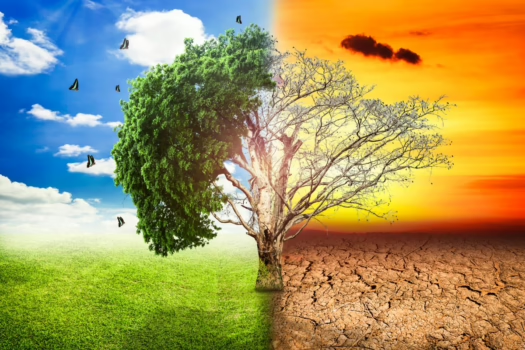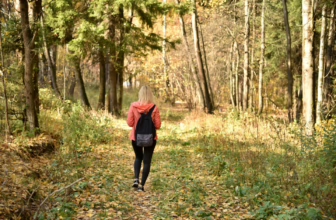Introduction: A Growing Concern
Climate change isn’t just an environmental issue—it’s shaping the emotional lives of young people around the world. Today’s youth face a unique emotional burden: climate anxiety, the persistent worry and fear caused by ongoing environmental threats. For many, this persistent sense of dread isn’t just a topic of conversation—it’s a mental health concern.
What Is Climate Anxiety?
Climate anxiety (also called eco‑anxiety) refers to the emotional distress caused by awareness of climate change and its implications. UNICEF defines it as “heightened emotional, mental or physical distress” in response to environmental changes (UNICEF).
The American Psychological Association (APA) describes eco-anxiety as a chronic fear of environmental collapse—not an illness, but a natural response to witnessing a future in crisis (Wikipedia).
How Widespread Is This Among Youth?
The numbers are alarming:
- A global survey of 15–25-year-olds found that over 60% were extremely worried about climate change, and more than 40% said it affected their mental health (Teen Vogue, Wikipedia).
- In the UK, 29% of young people aged 18–24 reported that their mental health suffered due to climate concerns, compared to only 13% of older adults (British Psychological Society).
- Among primary school children, 78% voiced concern about climate change, with 27% saying they were very worried (Greenpeace UK).
- A large international survey of youth from 10 countries echoed these findings, revealing 60% were very or extremely worried, with 66% reporting feelings of sadness, fear, or anxiety about the future (Wikipedia, Global Health).
Climate anxiety isn’t rare—it’s an unfolding crisis among the young.
Why Are Younger Generations More Vulnerable?
Several factors make youth particularly susceptible:
1. They Will Live in the Future They Fear
Younger generations understand the science—and they see how inaction today threatens their future. That sense of inheriting an unstable world shapes their emotional well‑being profoundly.
2. Perceived Government Inaction Fuels Hopelessness
Research shows that young people who feel betrayed by lack of climate leadership experience higher levels of distress (Global Health, Wikipedia). Without meaningful response, climate anxiety deepens.
3. Chronic Panoramic Stress
Unlike responding to one natural disaster, climate change is ongoing. This “slow burn” effect can lead to helplessness, grief, and even existential dread—sometimes described as ecological grief or solastalgia (Wikipedia).
What Does Climate Anxiety Look Like?
In youth, climate anxiety often manifests in:
- Insomnia or sleep disturbances
- Difficulty concentrating
- Panic attacks
- Loss of appetite or physical discomfort
- Persistent feelings of fear, anger, or grief (Wikipedia)
These symptoms mirror those of generalized anxiety but are rooted in ecological threats.
Turning Anxiety into Action: A Path Forward
Climate anxiety can cripple—or catalyze change.
Psychologists note that engaging in action or activism often improves mental well‑being. Feeling useful and connected helps counteract despair (APA, Imperial College London).
Zero Hour Arkansas, a youth-led climate justice group, exemplifies this. They created “climate anxiety processing sessions” where students channeled grief into activism, building community and hope (Teen Vogue).
How We Can Support Youth Struggling with Climate Anxiety
1. Validate, Don’t Dismiss
Let young people express their fears without being told to “just move on.” Acknowledging their emotions helps them feel heard and understood (Mental Health UK).
2. Encourage Action in Community
Getting involved—through youth groups, local projects, or creative advocacy—can help channel anxiety into purpose and resilience (APA).
3. Promote Connection to Nature
Spending time in green spaces has proven mental health benefits and helps counter emotional overload. Even simple acts like gardening can offer restorative grounding (APA, Mental Health UK).
4. Seek Professional Help
When anxiety becomes overwhelming, mental health professionals are increasingly integrating climate concerns into their practices—a shift that validates younger people’s experiences (APA).
Final Thoughts: Acknowledging Pain While Cultivating Hope
Climate anxiety among young people reflects a profound awareness—and rightful concern—for the planet’s future. While the emotional weight is real, it doesn’t have to remain paralyzing. By validating these feelings, encouraging collective action, and fostering community, we can turn anxiety into courage and grief into growth.
Our youth deserve both acknowledgment of their fears and support in building a brighter tomorrow.
References
- Survey data: The Lancet survey, 60% extremely worried, 40% mental health impacted (Teen Vogue, Wikipedia).
- BPS survey: 29% young impacted vs 13% older adults (British Psychological Society).
- Primary children survey: 78% worried, 27% very worried (Greenpeace UK).
- Eco-anxiety definitions and prevalence (Wikipedia, UNICEF).
- Eco-grief and solastalgia context (Wikipedia).
- Activism as coping method (APA, Imperial College London).
- Teen Vogue story on Arkansas activism (Teen Vogue).
Follow me down the rabbit hole!
I'm Alice and I live with a dizzying assortment of invisible disabilities, including ADHD and fibromyalgia. I write to raise awareness and end the stigma surrounding mental and chronic illnesses of all kinds.








